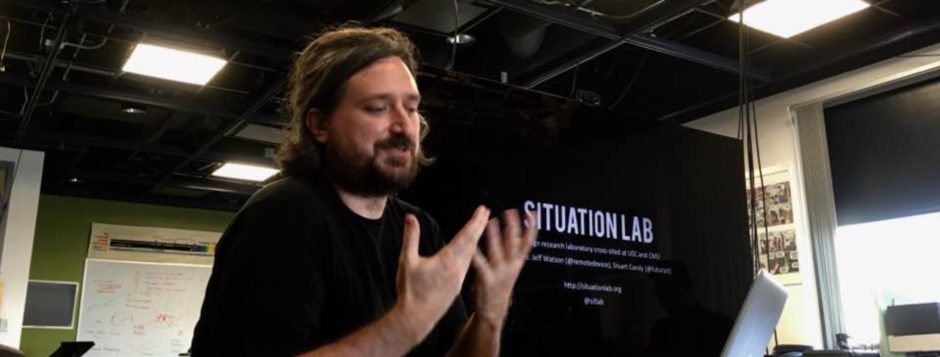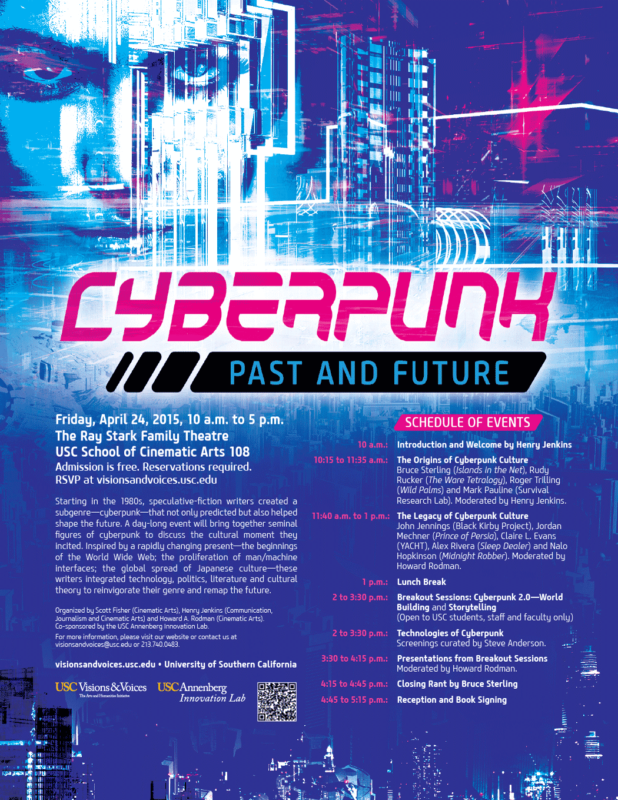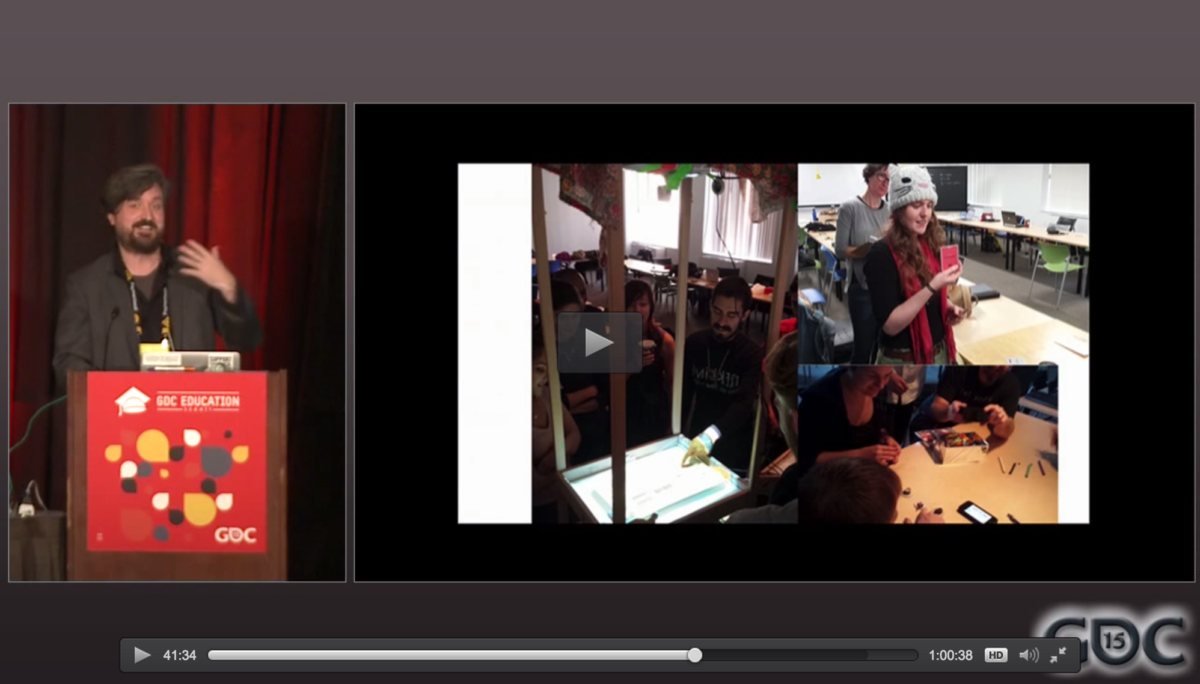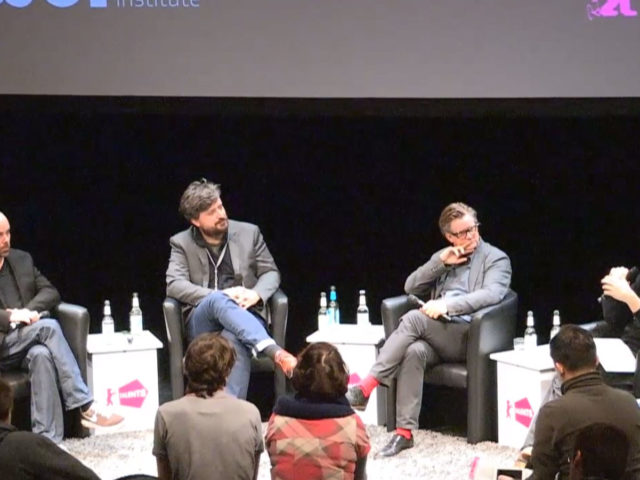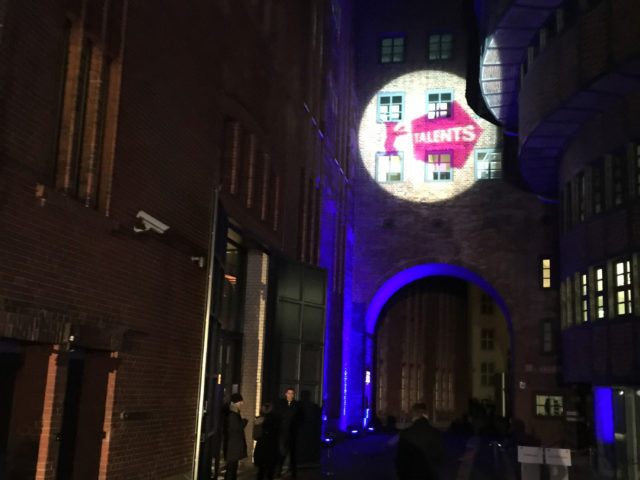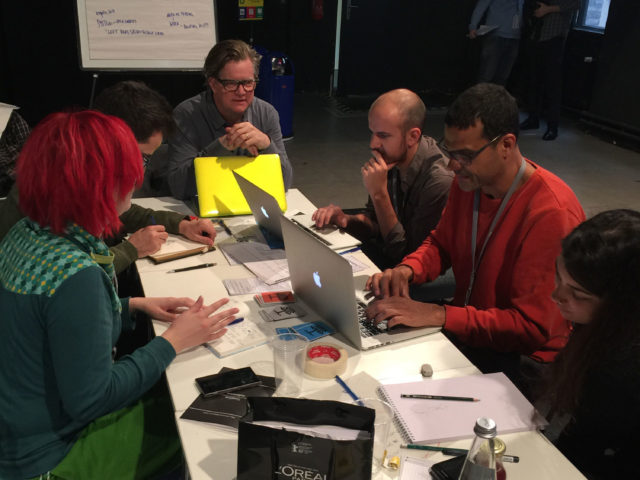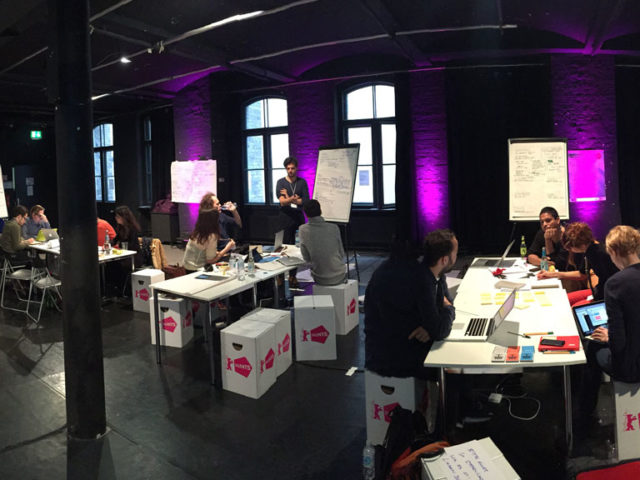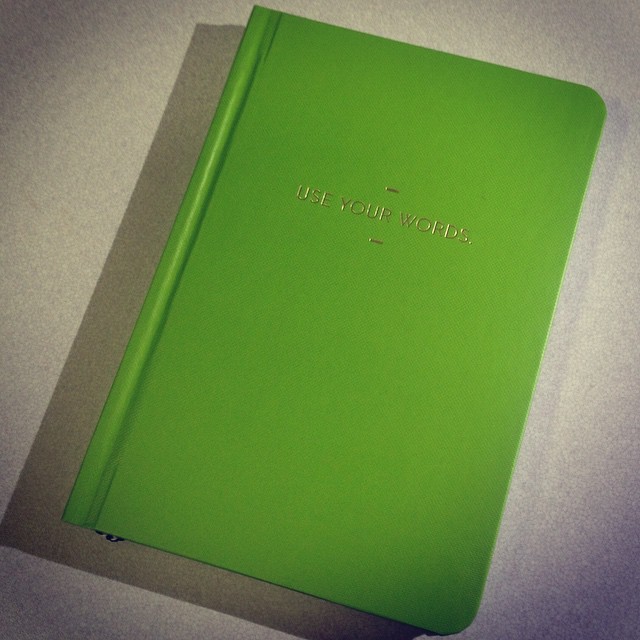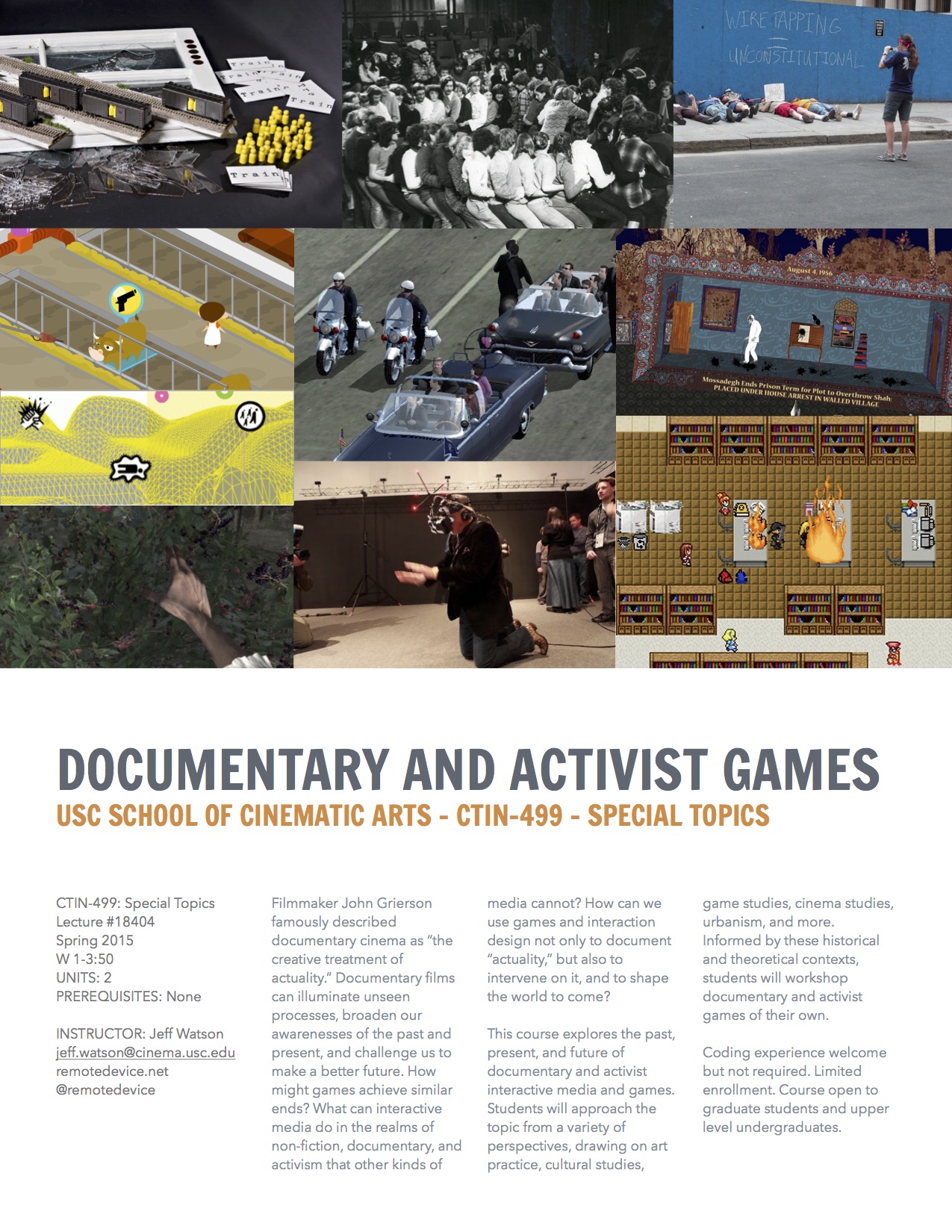About
Jeff Watson is an artist, designer, and Assistant Professor of Interactive Media and Games at the University of Southern California School of Cinematic Arts.
-
Cyberpunk: Past and Future
This Friday, Geoff Long and I will run a collaborative storytelling workshop during Cyberpunk: Past and Future, a special event at USC Visions & Voices co-curated by professors Henry Jenkins, Scott Fisher, and Howard Rodman. Later, we’ll be publishing some of the material created by our participants (a stellar group including seminal cyberpunk figures Rudy Rucker, Nalo Hopkinson, and Bruce Sterling) as a special “Cyberpunk 2.0 Story Sparks Kit.” Stay tuned — and please join us if you can!
The literary and cultural movement known as cyberpunk began in the early 1980s when a confluence of speculative-fiction writers remapped and reinvigorated their genre—and much more. Inspired by a rapidly changing present—the beginnings of the World Wide Web; the proliferation of man/machine interfaces; the global spread of Japanese culture—these writers integrated technology, politics, literature and cultural theory to create a genre that not only predicted the future but also helped shape it.
A day-long event will bring together seminal figures of the cyberpunk movement, including Rudy Rucker (the Ware Tetralogy), Nalo Hopkinson (Brown Girl in the Ring, Midnight Robber) and Bruce Sterling (Bicycle Repairman, Taklamakan, Mirrorshades), along with figures from the worlds of film, music, technology, architecture and cultural theory, to discuss the cultural moment cyberpunk incited.
The afternoon will be devoted to “Cyberpunk 2.0”: small-group world-building and storytelling sessions in which USC students can collaborate with cyberpunk’s founding figures. Teams will [construct] a story and decide on a means of presenting that story to the conference participants. Led by Jeff Watson (School of Cinematic Arts) and Geoff Long (Annenberg School for Communication and Journalism). Participants will include the morning’s panelists, plus Stacey Robinson (Black Kirby Project). (USC Visions & Voices)
Additional information and background, courtesy Henry Jenkins, here.
Posted in Blog
Tagged bruce sterling, co-creation, cyberpunk, futures, geoff long, howard rodman, scott fisher, visions and voices, workshops, worldbuilding
Comments Off on Cyberpunk: Past and Future
What Hockey Wants: Drama, Narrative, and Sports
My paper, “What Hockey Wants: Drama, Narrative, and Sports,” was published this month (just in time for the Stanley Cup playoffs) in Well Played Journal from ETC Press. The paper draws on game studies, literary theory, psychology, and other disciplines to discuss how narrative works in one of my all-time favorite games, hockey. Here are the introductory paragraphs, which summarize the core themes of this project:
Like many sports, ice hockey, or “hockey,” as it is known to its players and fans, generates legend, myth, history, biography, autobiography, and other forms of narrative at a furious pace. In, around, and among instances of gameplay, hockey produces dramatic situations which resolve into a variety of public and private narratives. Some of these narratives, such as the stories of an individual game played late at night on a neighborhood rink, are ephemeral and known only to certain players; others are so widely told and acquire such cultural significance that they are memorialized in statuary, feature films, currency, or novels; and some leave traces in the game itself as strategies, traditions, superstitions, play styles, and written and unwritten rules. Hockey is a creature of narrative – it eats it and excretes it – and yet, somewhat amazingly, it does not require any kind of centralized story department or author to spin its yarns. Rather, like all sports, and to a certain degree like all games, hockey is a set of protocols that propagates and iterates itself by producing the kinds of situations that are worth telling stories about.
Despite this impressive narrative capability, sports like hockey are not frequently mentioned in the discussions game studies and game design communities stage around the topic of narrative. One possible explanation for this relative lack of mention is that the ways narrative manifests in sports may at first glance seem more related to modes of spectatorship than modes of play, and therefore may be considered exterior to the kinds of narrative thought to be more properly “native” to games. It may also be the case that narrative is perceived as simply more central or essential – particularly from a player experience perspective – to things like adventure games, role-playing games, storytelling games, open-world exploration games, and interactive fiction, than it is to sports. Such overtly story-centric games are certainly worthy of consideration. For scholars and designers interested in the poetics, aesthetics, and politics of digital gameplay, it is perhaps understandable that the sweaty world of sports be overlooked. It is also understandable that some researchers will prefer to explore more exclusively digital forms of gameplay insofar as their work may relate more directly to how narrative connects to current trends in technology and communications than to games as a broader category of design. Regardless, eliding sports from the discussion risks depriving us of important ways of speaking about and designing about games and narrative. Understanding the powerful and parsimonious ways in which sports instantiate various forms of narrative, and the ways in which those instantiations can in turn become incorporated into the most basic structures of the games themselves, can provide useful models and metaphors for examining all games as both artifacts and producers of culture.
This paper presents an examination of hockey as a cybernetic system, paying particular attention to the role of narrative. Like all sports, hockey offers opportunities for individuals to take part in dramatic situations that would not otherwise occur. As players, teams, and fans actively engage with these situations, they produce and consume various kinds of public and private narrative. These narratives in turn shape subsequent situations both within and beyond the formal boundaries of the sport. Through a series of examples from hockey and related games, this paper examines how narrative emerges in, around, and among various contexts of hockey gameplay; how this narrative impacts both ludic and paraludic situations; and how it can become encoded in the formal structures of the game itself. (ETC Press: Well Played Journal, Volume 4 Number 1)
Get the paper as a .pdf here, or get the whole journal issue here.
Thanks to Drew Davidson and ETC Press, and special thanks to Sean C. Duncan, who served as Guest Editor for this issue alongside Caro Williams.
Posted in Blog
Tagged drama, encoded narrative, games, hockey, ludonarrativity, narrative, sports, well played, writing
Comments Off on What Hockey Wants: Drama, Narrative, and Sports
GDC Vault – Teaching Games with Games 2
GDC 2015 Education Summit Panel featuring Celia Pearce, Jeff Watson, Eric Zimmerman, Andy Nealen, Brenda Romero, and Tracy Fullerton. Moderated by Colleen Macklin and John Sharp. Viewable for free on GDC Vault.
One of our best tools for teaching games are games themselves. Name a facet of college-level games education and there is a way to teach it through gameplay. Want to explore continuity and consistency in storytelling? Try shuffling a deck of story cards. Want to think about gender dynamics? Mod a sport around gender stereotypes. Building on last year’s session, we have six more educators sharing a classroom exercise used to teach a different facet of games, using games! Seasoned and new faculty alike will share their best programming, design, story, collaborative learning, game studies and criticism play-based exercises. (GDC Vault: Teaching Games with Games 2)
(My bit comes on at 35:00)
Posted in Blog
Tagged andy nealen, brenda romero, colleen macklin, eric zimmerman, john sharp, tracy fullerton
8 Comments
Making process visible
“I saw scores as a way of describing all such processes in all the arts, of marking process visible and thereby designing with process through scores. I saw scores also as a way of communicating these processes over time and space to other people in other places at other moments and as a vehicle to allow many people into the act of creation together, allowing for participation, feedback and communication.”
Posted in Quotes
Tagged architecture, lawrence halprin, participation, process architecture, process design, rsvp cycles, scores
Comments Off on Making process visible
Worldbuilding at Berlinale Talents 2015
As entertainment properties become increasingly spatialized and nonlinear, spreading across diverse platforms, contexts, and modes, how might they benefit if the ways in which they are developed were to undergo similar changes? What alternative approaches exist to the traditionally linear and “siloed” processes of conceptualizing and iterating narrative storyworlds? Is it always appropriate that an entertainment property should begin with a book, script, bible, or treatment and only proceed into design and visualization once preproduction is underway? Or could story material be developed in concert with the kinds of research, visualization, fabrication, and contextual exploration typically associated with production design? In short, how can production itself be a part of development? How can design fiction and visual/conceptual “worldbuilding” create the context for story, rather than the other way around?
These and other questions were at the heart of “Imaginary Worlds: Exploring the Unknown,” a panel and two day studio workshop held at Berlinale Talents, the annual summit and networking platform of the Berlin International Film Festival. Using a modified and extended version of the creative process framework developed for the 2015 Science of Fiction conference, our panel and workshop sessions explored new ways of structuring collaborations across media arts disciplines so as to imagine and visualize a fictional storyworld. Over the course of two intensive 4-5 hour sessions, our team, consisting of production designer Alex McDowell, educator and process architect Bruno Setola, transmedia artist Juan Diaz, and myself, led 25 designers, writers, directors, and other invited talents through a creative process exploring and developing the storyworld of Rilao, a fictional island nation in the South Pacific.
The result of this collaboration was five “deep dives” into various eras of Rilao, each illustrated with dozens of designed artifacts, images, place descriptions, characters, and story elements. Each deep dive coalesced around a “central disruptor,” or “story magnet” — a place or situation that participants identified as being especially rich in narrative potential — and radiated outward, bringing together elements of the world’s imagined histories, presents, and futures. Participants developed these elements through the play of an imagination game and the engagement in a secondary process that focused on elaborating upon and finding the connective strands among the diverse ideas generated by the game. As the whirlwind of creation drew to a close, the materials produced by participants were gathered together into an archive which will be integrated into the broader Rilao world-build.
For more on the philosophies behind this process, and how it might relate to emerging methodologies in domains ranging from entertainment development to education and social innovation, please watch our panel, here:
Special thanks to Romke Faber, Florian Weghorn, Andrea Rieder, and all the Talents, without whom none of this could have happened.
Posted in Blog
Tagged alex mcdowell, berlin, berlinale talents, bruno setola, juan diaz, process design, rilao, worldbuilding
4 Comments
Syllabus: Documentary and Activist Games (CTIN-499)
Filmmaker John Grierson famously described documentary cinema as “the creative treatment of actuality.” Documentary films can illuminate unseen processes, broaden our awareness of the past and present, and challenge us to make a better future. How might games achieve similar ends? What can interactive media do in the realms of non-fiction, documentary, and activism that other kinds of media cannot? How can we use games and interaction design to not only document the Real, but also to intervene on it, and to shape the world to come?
This course explores the past, present, and future of documentary and activist interactive media and games. Students will approach the topic from a variety of perspectives, drawing on contemporary art practice, cultural studies, game studies, cinema studies, and more. Informed by these historical and theoretical contexts, students will workshop documentary and activist games of their own.
Posted in Blog
Tagged activism, courses, ctin-499, documentary, game design, games, imgd, serious games, usc
2 Comments
